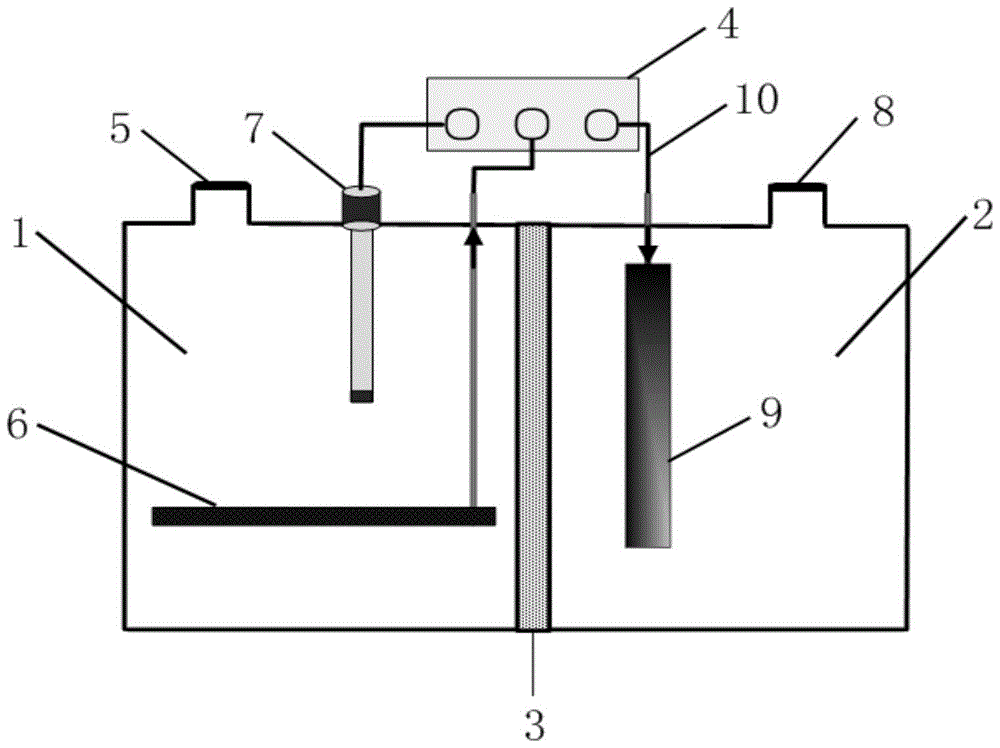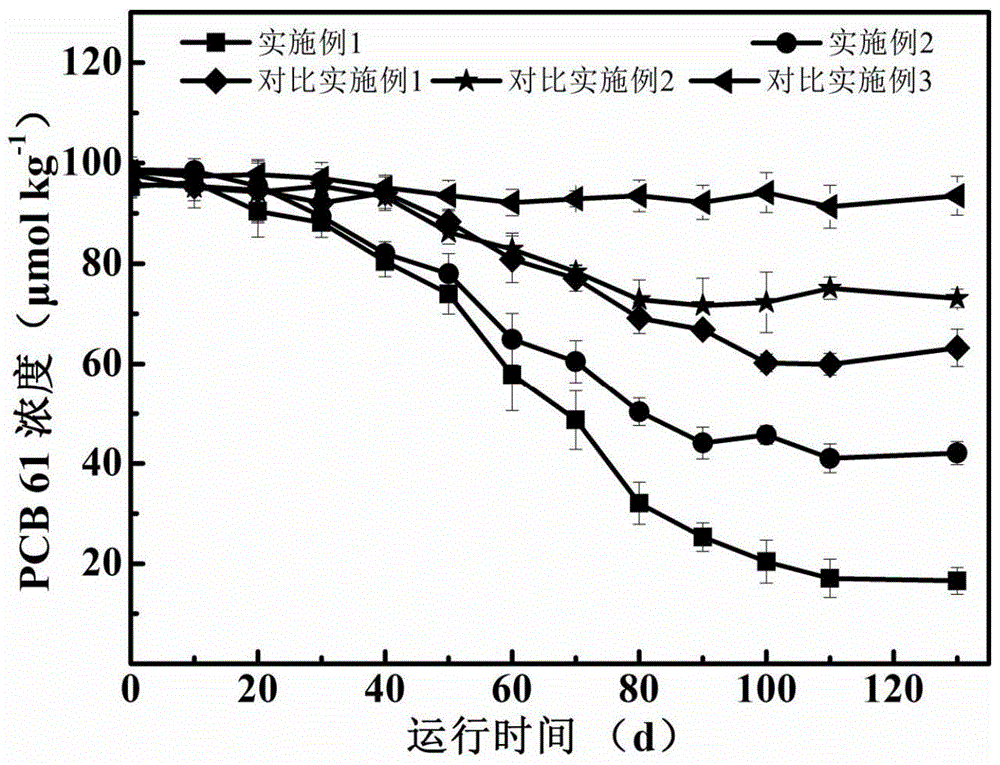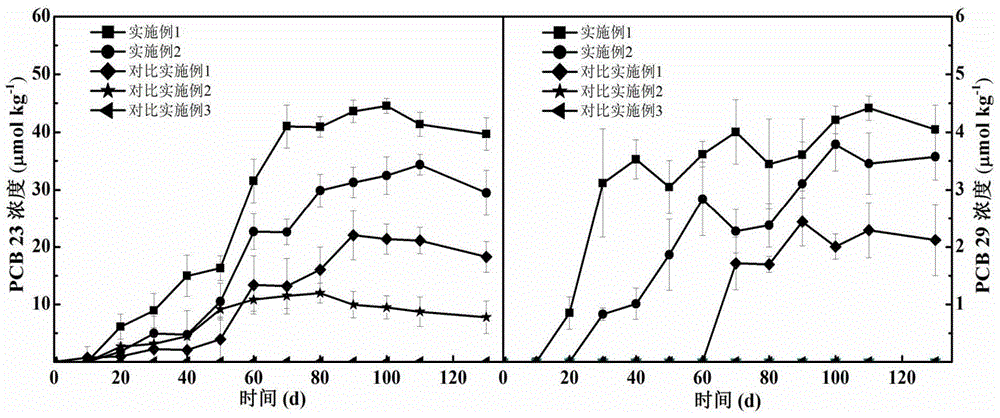Device and method for removing polychlorinated biphenyls in sediment by using microbial electrolytic cell
A microbial electrolytic cell and polychlorinated biphenyl technology, which is applied in the field of soil remediation, can solve the problems that the structural stability of polychlorinated biphenyls harms human health and the natural environment, and achieves avoiding high costs, efficient dehalogenation, and pollution. repaired effect
- Summary
- Abstract
- Description
- Claims
- Application Information
AI Technical Summary
Problems solved by technology
Method used
Image
Examples
Embodiment 1
[0037] Such as figure 1 As shown, a device for removing polychlorinated biphenyls in sediment using a microbial electrolytic cell in this embodiment consists of a dual-chamber microbial electrolytic cell and an electrochemical workstation. The dual-chamber microbial electrolytic cell includes an anode chamber 1 and a cathode chamber 2, The anode chamber and the cathode chamber are separated by a cation exchange membrane 3, the anode chamber is provided with the battery anode liquid inlet 5, the anode electrode 6 and the reference electrode 7, the cathode chamber is provided with the battery cathode liquid inlet 8 and the cathode electrode 9, the anode electrode, The reference electrode and the cathode electrode are connected to the electrochemical workstation 4 through an external circuit 10, and the electrochemical workstation constantly controls the anode to maintain a potential of +0.2V.
[0038] The device of this embodiment is used to remove polychlorinated biphenyls in t...
Embodiment 2
[0042] Compared with Example 1, the device and method for removing polychlorinated biphenyls in sediment by using a microbial electrolytic cell in this example is different in that 1ml of sodium acetate with a concentration of 1M is not added regularly, and the rest are identical.
PUM
 Login to View More
Login to View More Abstract
Description
Claims
Application Information
 Login to View More
Login to View More - R&D
- Intellectual Property
- Life Sciences
- Materials
- Tech Scout
- Unparalleled Data Quality
- Higher Quality Content
- 60% Fewer Hallucinations
Browse by: Latest US Patents, China's latest patents, Technical Efficacy Thesaurus, Application Domain, Technology Topic, Popular Technical Reports.
© 2025 PatSnap. All rights reserved.Legal|Privacy policy|Modern Slavery Act Transparency Statement|Sitemap|About US| Contact US: help@patsnap.com



